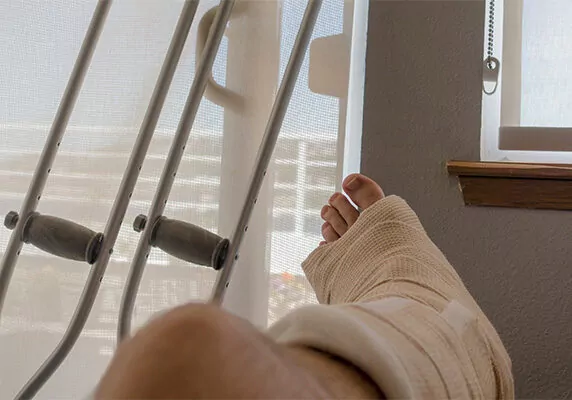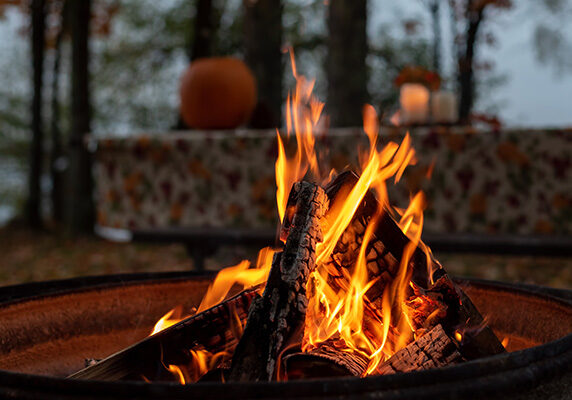Most sports-related injuries affect the people on the field or racetrack—the product of incidents which reflect the inherent risk of participating in sports at the professional level.
But serious injuries to players are relatively rare—and injuries to fans are even more rare. More than 15 million Americans attend sporting events every year without incident. However, spectator injuries do happen, and can happen at just about any type of sporting event as a direct or indirect result of events on and off the field.
In a 2018 University of Alabama study, the causes of 181 spectator injuries which occurred between 2000 and 2018 were investigated. The researchers found that while some professional sports leagues have implemented safety measures to limit obvious risks, others have not, or have resorted to half-measures in hopes of retaining the existing spectator experience with minimal interference.
Most spectator injuries and deaths happen at automobile and motorcycle racing events.
Of the injury events tracked by the University of Alabama study, 123 occurred at automotive events, with 38 fatalities resulting. Auto racing spectators face some of the greatest risks of all sports fans due to the nature of the events. Their exposure to danger greatly increases the closer they are to the track, as vehicles can lose control and flip into spectator viewing areas adjacent to the racetrack, or parts shed by damaged vehicles can fly into the stands.
The seriousness of this risk was most apparent in the devastating 1955 Le Mans disaster, which claimed the lives of 87 people after a vehicle was launched into the grandstands directly across from the course pit area. At the time, the pit area and the race course itself were not divided by any protective walls or grass fields. The spectators across the way had little in the way of protection against oncoming vehicles or debris, save for a barrier made from hay bales that parts of the car easily cleared as it disintegrated and burst into flames. The disaster remains the single deadliest accident in motorsport to this day.
Modern motorsports vehicles and courses are considerably safer, but racing authorities and venue operators continue to grapple with the need to maintain spectator safety, while still allowing fans to remain close to the track with a clear view of the action.
In 1987, two major accidents prompted US motorsports to re-examine spectator safety measures and regulations.
IndyCar and NASCAR, two of the most prominent US auto racing bodies, have experienced their own share of incidents that have put the lives of spectators in danger.
1987 Winston 500
On May 3rd, 1987, Talladega Superspeedway was the scene of a violent crash that put an end to unrestricted high-speed races at the venue, and prompted the introduction of mandatory restrictor plates into NASCAR.
On lap 22, Bobby Allison’s car flew into the air as it passed spectators seated near the start/finish line. Over 100 feet of protective fencing was torn down by the vehicle, but the crowd was spared by a set of steel cables that managed to catch and throw the car back onto the track.
Though the accident had the potential to eclipse the consequences of Le Mans ‘55, only a handful of injuries were caused by flying debris and shrapnel, including one victim who lost an eye. To this day, NASCAR continues to restrict race speeds in hopes of preventing similar accidents, though Talladega saw a similar accident in 2009. This time, the modernized protective fence held.
1987 Indianapolis 500
Weeks before the NASCAR accident at Talladega, the Indianapolis 500, highlight of the Championship Auto Racing Teams (CART) series, played out to a historic finish. But barely mentioned in broadcasts of the event was a spectator fatality that occurred on lap 130.
A wheel detached from a racer that was experiencing mechanical difficulties, and was then struck by Roberto Guerrero’s car and sent flying over the protective catch fencing on the side of the track and into the stands. The 18-pound projectile struck a man on the head, causing severe head trauma and blood loss. Despite receiving immediate medical assistance and being immediately taken to a hospital, the victim succumbed to his injuries hours later. He was the first Indy 500 spectator to die as a direct result of the race since 1938.
The victim’s wife sued the operators of the Indianapolis Motor Speedway (IMS), the U.S. Auto Club (USAC), and the race team whose vehicle the tire initially detached from. USAC, which governed the Indy 500 at the time, was accused of providing inadequate safety inspections of the vehicles and equipment prior to race day. Additionally, the IMS was accused of failing to properly inform spectators of potential risks, and failing to erect catch fences that were tall enough to stop objects flying from the track.
The victim’s wife asked for $9 million, but the lawsuit was ultimately settled out of court for an undisclosed amount. Taller catchfences were eventually implemented around the race course, and since then, no further fatalities have occurred at the Indy 500.
While the danger of spectator injuries at any sports event persists, the hazards are not limited to fly balls, errant hockey pucks, race cars, and other debris originating from the field of play. Other spectators can present just as much of a hazard.
Other spectators have often been the cause of injury at sporting events due to drunkenness and throwing objects.
While a number of sports can place spectators in danger simply by attending the event, many venues and sports organizations have taken steps to try and limit these hazards. However, the actions of spectators themselves have proven dangerous as well.
A schoolteacher attending a Buffalo Bills football game in 2018 allegedly suffered total amnesia after another spectator fell and struck the back of her head. The fall had been no accident, but rather was the result of out-of-control drunken spectators in the seats behind hers. Security cameras showed the instigators shoving a woman, causing her to fall into the spectators seated in front of her.
The victim filed a lawsuit against the person who allegedly shoved the fan atop them, his friends, and the companies responsible for security at the stadium. Security staff had allegedly reported to the section of the stadium where the accident occurred, but according to the lawsuit failed to control the developing situation.
While this incident is an example of one spectator harming another, there have been instances where whole stadiums erupted out of control.
Ten Cent Beer Night Riot
A combination of fan rivalry and cheap alcohol contributed to a June 4th, 1974 riot at Cleveland Stadium. In an effort to draw more fans to games, the Cleveland Indians held a Ten Cent Beer Night promotion, where 12 ounce cups of beer were sold for only 10 cents apiece. There was a limit of six beers per purchase, but no limit on total consumption was established.
The crowd proved unruly from the outset, with fans running on to the field to expose themselves to other spectators and the players. As controversial play calls happened throughout the game, some began throwing objects onto the field, including parts of the stadium seats.
In the bottom of the ninth inning, a fan ran out onto the field to confront a Texas Rangers outfielder. His team charged onto the field, some armed with baseball bats, believing their teammate had been attacked. Hundreds of fans descended onto the field, armed with knives and pieces of the stadium seats, and began to surround the team. Cleveland’s players then rushed the field to the defense of their rivals, with some attacking their own fans to try and protect the Rangers players.
By the time police eventually established control over the rioters, dozen of spectators, members of the stadium staff, and players on both teams had sustained minor injuries.
Sports facilities have been making changes to improve crowd safety, but oftentimes only in reaction to serious accidents.
Sports like baseball and hockey involve small objects flying at high speeds, and there have been notable injuries to players and spectators alike. Even sports like golf can be hazardous to spectators, as a golf ball can be taken far off course by either a bad swing or high winds, and land on an unsuspecting member of the crowd.
These types of incidents represent a minority of spectator injuries and deaths compared to motorsports. But in recent years, many sports have been forced to respond after spectator injuries and deaths have resulted in legal action.
In 2002, a young hockey fan was stricken by a puck while attending a game for the Columbus Blue Jackets. Though initially released from care, complications with the young fan’s injury led to her death two days after the incident. The NHL was criticized for its failure to force venues to install protective netting around the arena, despite having considered doing so only a year prior to the fan’s death. The victim’s family sued the NHL for its failure to provide adequate protection, and the case was eventually settled out of court for $1.2 million.
Successful lawsuits against sports teams and facilities have relied on showing a failure to provide adequate spectator protection.
What has protected many sporting venues against liability for spectator injuries in the past is the “Baseball Rule,” which historically has limited the duty of care baseball venue owners must exercise in protecting spectators, because of an assumption that spectators understand that attending a sporting event comes with inherent and obvious risks.
However, this assumption of risk does not mean that a court will not side with an injured spectator if it’s shown that spectator safety was knowingly neglected. Venues, participants, and even entire sports teams can be held liable for spectator injuries and wrongful deaths if whatever inherent risks spectators are assumed to have accepted don’t account for negligence shown by facility owners or sports teams. Among the key questions asked by courts are:
- Was the danger obvious enough that the patron knowingly assumed the risk by attending the event?
- Was the danger so obvious that the owner/operator of the venue had no duty to warn or protect spectators?
- Is the spectator familiar enough with the game to understand the risks associated with attendance?
- Are there additional safety features that could have been constructed at reasonable cost without impeding visibility?
With the many safety features that have been incorporated into stadiums, arenas, and racetracks over the last several decades, it is now safer to attend a sporting event than it’s ever been before. However, packing tens of thousands of spectators into a small space has inherent risk. Some of this risk is unavoidable. But when stadium operators, security personnel, and sports teams fail to take action to protect the audiences they depend upon, spectators are well within their rights to seek compensation for their injuries.



